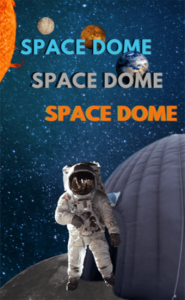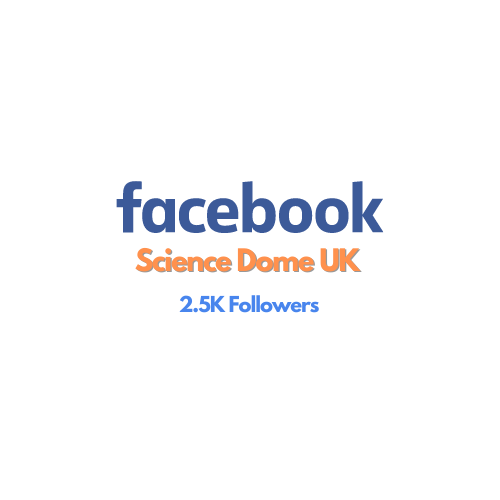School Domes
We provide tailored science programmes for schools. These are
exciting and interactive sessions where students learn by immersive
experiences and interaction with the matter and our presenters.
Mobile Planetarium for Schools in the UK
We operate seven mobile digital domes from our bases in Bournemouth, Wimborne (Dorset), Brighton, Trowbridge, London, Leeds, and Newark. We cover the whole of the UK and are the biggest portable pop-up planetarium and science dome business in the country.
Full Day Visit
£580 (excluding VAT) with a typical day including up to five class shows. Local BCP Council discount available.
Half Day Visit
£480 (excluding VAT) covering three shows. Local BCP Council discount available.
Get in touch
If your school is located near one of our dome bases, then we may be able to come for a half day. Please apply for half day rates if the case.
Immersive Science Education for your students
We support the school curriculum with our live, interactive teaching. Our workshops and immersive planetarium bring a different and effective way of learning science and can inspire a lifelong interest in STEAM on your students. Check out our school programme and domes (Space Dome, Dinosaur Dome and Fractals Dome) to find out more about the different topics we cover.
School Programmes can be partially constructed by the school in advance of visit to reflect the current classroom subjects. Also, topic shows can be mixed if required during the day, with for example different shows in the afternoon.
We advise to plan your schools event early with us. We can take bookings 6 to 8 months in advance. Certain dates during a term can be very busy so it is a way to guarantee your slot.
At Science Dome UK, we use Live Interactive planetarium shows (LIPS) methodology to teach science. This means that planetarium experiences are interactive with the possibility of asking questions to the presenter about the topic; we focus on getting concepts and ideas across to learners as well as encourage reflection. We use a variety of resources during our sessions to involve learners providing them with immersive experiences that will make learning stick in their minds.
We base our presentations in real scientific data to bring the real universe to our domes. Our projectors can capture real Earth data as well as space data. For example, in our show about Mars we can present the different layers of the planet in a 360 degree view using real scientific data providing this way a deep study of the planet. We can explore its volcanoes, polar ice caps, canyons and thin clouds.
We go beyond simulators to offer an experience that feels real.
Give us a call or email us to discuss further how we can help your students to reach a higher level of understanding of the different subjects they face at school.
Pre-School
We teach the little ones about the awesomeness of nature, our planet, the universe, and the history behind us.
Our focus is on getting them to understand and admire the infinite wonders of everything surrounding us.
Primary Schools
If you want your class to go beyond and reach their maximum potential, we are here to help. A practical method made to stick, an immersive experience they will never forget, and valuable knowledge they will keep forever.
Secondary Schools
You want your students to leave school having mastering science and we are here to support you in getting your class to achieve the deepest understanding about science topics. Your students will see the interconnection between sciences such as geology, astronomy, and physics as well as be challenged and encouraged to explore science themselves. All through practical and immersive experiences that they will never forget.
Science Dome Pre-School Service
Planetarium for Pre-School
Our planetarium sessions for pre-school pupils provide extra tailored science programmes. These are exciting and interactive sessions as pupils can get immersed in the subject in a unique and profound way. Our presenters will use a practical and interactive approach to connect with the children and evoke in them interest, curiosity, enjoyment and learning. Science experienced in a very different way, we put our focus on inspiring young minds and make them understand and absorb knowledge in such an exciting manner that they will never forget.
Pre-School Programme:
Check below our exciting Dome Programme specifically designed for Pre-School and if you require a specific topic that’s not on the list, just get in touch as we will be very likely able to help.
Please check our Full Dome Film Shows to learn more about the topics we can cover for your class and get more insights about some of the film shows we use to support us during our engaging sessions.
Early Years Dinosaur Show
The show includes immersive full dome 360 degree images of dinosaurs. Our giant 360 degree projector is used to walk through a dinosaur landscape.
The show starts with time travel back to the Jurassic times and pictures of early earth landscapes. The programme then gives an interactive introduction to dinosaurs and talks about the fossils in the local Jurassic coast.
Real dinosaur fossils for the children to hold and examine are included.
The show ends with possible ways of dinosaur extinction such as a large meteorite. We then look at the stars using the planetarium. We observe many shooting stars and the night’s sky.
An extensive Rocks and Fossils collection is available to examine and some sample can be purchase by the children, if desired. Makes a great day suitable for reception onwards and can include KS1/KS2 materials with rocks and soils.
Early Years Space Show
Science Dome Primary School Service
Planetarium for Primary School
Our planetarium sessions provide extra tailored science programmes. These are exciting and interactive sessions as students can get immersed in the subject in a unique and profound way at the same time than ask questions to the presenter about the topic as it run through the shows. Live Interactive planetarium shows (LIPS) are the best resource to help your students to achieve their maximum potential and we also provide a special education service.
Our practical and interactive approach gets us to connect with the students in a very distinctive way. We’ll provide your class with a unique, immersive learning experience that will stick in their minds forever; helping them along in their learning journey and supporting teachers and the science curriculum along the way.
Primary School Programme:
Explore our exciting Dome Programmes and if you require a specific topic that’s not on display, just get in touch as we will be very likely able to help.
Please also check our Full Dome Film Shows to learn more about the topics we can cover for your class and get more insights about some of the film shows we use to support us during our engaging sessions.
Don’t forget to explore all our Science Domes (Space Dome, Dinosaur Dome and Fractals Dome) with further topics to meet the needs of your class.
KS1/2/3 on Dinosaur Show.
The show includes immersive full dome 360 degree images of dinosaurs. Our giant 360 degree projector is used to walk through a dinosaur landscape.
The show starts with time travel back to the Jurassic times and pictures of early earth landscapes. The programme then gives an interactive introduction to dinosaurs and talks about the fossils in the local Jurassic coast.
Real dinosaur fossils for the children to hold and examine are included.
The show ends with possible ways of dinosaur extinction such as a large meteorite. We then look at the stars using the planetarium. We observe many shooting stars and the night’s sky.
An extensive Rocks and Fossils collection is available to examine and some sample can be purchase by the children, if desired. Makes a great day suitable for reception onwards and can include KS1/KS2 materials with rocks and soils.
KS2/3 on Rocks, Soils and Fossils.
KS2/3 on 'Solar System Tour and Beyond'.
We’ll dive into:
– The planets
– Small bodies: asteroids, comets, meteoroids and dwarf planets.
KS1/2 on 'Space Exploration' (Apollo Moon Landings).
'KS1/2 on Earth and Beyond'
- The Earth, Moon and Sun.
- Gravity
- Day/Night
- Seasons and Space
- Exploration of the Moon
- And much more!
KS1/2 on 'Light/Dark and Space'
– What is light and its properties.
– Light in space.
– Reflection VS Refraction.
– Opacity, translucency and transparency.
– And much more!
Some of the questions we’ll dive into:
– How the eye works and shows us different colours.
– The rainbow.
– Why do we have daytime and night-time?
– How do we know so much about the stars?
– Why do the stars have different colours and brightness?
KS1/2 on 'Light and Sound'
How your ear drums work to hear sound?
What sound looks like, how your eyes work to capture the light and how images are created?
Deep into light and sound with us in this interactive and immersive session.
Explore and learn how sound and light travel. Get to ‘see’ sound in many different ways. Learn about rainbow and colours; refraction and reflection and much more. We’ll use examples from solar system with the moon and sun in 3D.
KS1/2 on 'Ancient Egypt (or Greece) and the Stars'
KS2/3/4 on 'Dynamic Earth'.
Covering climate, ocean currents, ocean life and the changing world.
An immersive fulldome program that explores the inner workings of Earth’s climate engine. With visualizations based on satellite monitoring data and advanced supercomputer simulations, this cutting-edge production follows a trail of energy that flows from the Sun into the interlocking systems that shape our climate: the atmosphere, oceans, and the biosphere.
Audiences will ride along on swirling ocean and wind currents, dive into the heart of a monster hurricane, come face-to-face with sharks and gigantic whales, and fly into roiling volcanoes. Year 3 to adult age range.
'Introduction to Stargazing': Story telling and the Stars
‘Introduction to Stargazing’ uses all the projectors below to give a star field and tour of the night’s sky.
The Science Dome has three star projectors which project a star field on the inner surface of the dome. The purpose is to demonstrate how the sky appears in the night sky and also how to observe various planets and shooting stars.
One star projector is produced using a computer with state of the art Stellarium software. This can also be downloaded and used on a PC desktop. Visit the link below.
http://www.stellarium.org/
The other two projectors use actual film of the real night sky and project a star field accurately with 10,000 stars. The star field moves across the dome also showing shooting stars and the moon.
'Oasis in Space’
'Black Holes-The Other Side of Infinity'.
KS1/2 on 'Environments' on land and the ocean.
KS1/2 on 'Under the Sea', 'Weather','Pirates & the Sea'.
Including elements such as underwater volcanoes, bioluminescence and tides.
Under the Sea:
We learn that many years ago sailing boats used to follow the stars for navigation. We take a journey on a boat and then go under the sea. We’ll listen many stories by sailors about life in the sea, and much more!
Start journey to the bottom of the sea by a submarine and back again. The planetarium shows the Australian landscape and the Australian stars and refers to the southern cross and compass using the constellations. The Great Barrier reef and other under the sea locations are shown.
Pirates and the Sea:
‘Pirates show with many ship wrecks. Pictures of sailing ships, pirates ships and flags from a 360 degree view. Australian stars and the southern cross and compass will be also covered.
We have pictures of caves and rocks which can be used for smuggling.
KS1/2 on 'Mini beasts' or 'Tropical Reefs.'
Minibeast:
We will learn and explore the world of minibeast. Minibeasts are small invertebrates and include arthropods such as spiders, insects, woodlice, centipedes and millipedes, as well as slugs and snails and worms.
Tropical Reefs:
Learn the secrets of the “rainforests of the sea” as you and your visitors embark on an oceanic safari to the world’s most vibrant — and endangered — marine ecosystems.
Learn about the biology of corals, and how reefs support some of the planet’s most complex food webs.
KS1/2 on 'Endangered Animals'.
The natural environment.
What are endangered animals?
Why are some species in danger?
– Habitat Loss (Destruction and Fragmentation)
– Invasive Species
– Pollution
– Poaching
– Overuse
Science: Recognise that the population of some animals/species are in danger of becoming extinct through loss of habitat, decline in food source or persecution for example.
The interdependence of living organisms and food chains.
How humans affect the local environment.
Geography: Causes and consequences of how places and environments change – Living in my world: caring for places and environments and the importance of being a global citizen.
How can we help prevent the extinction of endangered animals?
We will explore the topic of endangered animals in our 360 degrees mobile planetarium and invite children to reflect on the importance of keeping a balanced ecosystem. From tiny species to the biggest creatures, they all contribute to the equilibrium of nature.
Ecosystems are groups of plants and animals that are found in the same area and interact with each other bringing a healthy state to the ecosystems when they act in harmony. Each species that is lost triggers the loss of other species within its ecosystem. Plants, animals and all type of micro-organism bring balance to the ecosystem (forests, grasslands, rivers, oceans…) maintaining it healthy. Preserving wildlife helps not only to the ecosystem but also provides cures to deadly diseases, purifies environment (clean air, water and land). Allowing our environment to become contaminated, we risk our own health.
Healthy forests, grasslands, rivers and oceans are the result of a balanced ecosystem.
KS2/3/4 on 'Natural Selection'.
Adaptation and evolution.
In “Natural Selection” we will join Darwin on his voyage with the HMS Beagle to the Galapagos Islands where he was inspired to develop his later theory of transmutation by natural selection. Join us in the thrill of a scientific discovery, the adventure of science and the beauty of nature.
KS2/3/4 on 'Origins of Life'.
KS2/3 on 'Down to Earth'. Volcanoes and Earth's History.
We will learn about Earth’s ancient history by looking at the planet from space and then showing the pictures of the surface changing through time.
Pupils will learn the following;
– Earth has a different appearance and continents in the past.
– The core and make up of the interior
– Different rocks structures
– Different life and climate through time
– Types of volcanoes and location
– Continental drift and plates
– Earthquake zones and oceans
KS2/3 on 'Supervolcanoes.'
The award-winning Supervolcanoes looks back at rare classes of eruptions that have marshaled the energy that lurks, like a sleeping dragon, beneath the surface of planet Earth. The program moves beyond Earth to explore the impact of giant volcanic eruptions around our solar system.
Audiences will fly down to Neptune’s frigid moon Triton, and onto the ultimate volcanic world: Jupiter’s moon Io. On a visit to a legendary North American hot spot, Yellowstone National Park, the film asks: can a supervolcano erupt in our time?
Narrated by Benedict Cumberbatch.
KS2/3 on Nano Cam (Biodiversity at Micro-level).
A trip into Biodiversity that shrinks you down to the size of an insect and flies you through the eye of a needle. It offers a unique, motivating, didactic and funny approach to living things that has never been seen like this before.
It includes images of an electron microscope and the latest 3D animation technology showing the five kingdoms of living things. We discover their characteristics, form and their importance for the ecosystems and sustainability.
Explore Our Dome Themes
We Transform Learning Science Into Immersive Journeys
Our different dome themes provide a wide range of topics and subjects for our customers to choose among. Contact us for a chat and advice, we will guide you through the best options according to your type of event. Otherwise, please feel free to explore our domes and if you see anything in particular that you would like to have for your event, just let us know.
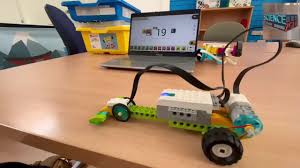
Coding Classes
(for BCP Council area)
We provide a variety of fun coding classes in the Bournemouth, Christchurch, Poole, Hampshire and Dorset areas.
Directly to your school or at our centre in Bournemouth (Royal Arcade in Boscombe).
We run coding classes with Robot making (LEGO Education), Turing Tumble programme, game building coding, Scratch game coding, Minecraft and Roblox, and much more!
Science Dome Secondary School Service
Planetarium for Secondary School
Our shows are rooted in National Curriculum for Key Stages 3 and 4 (Science, History) and the Edexcel GCSE in Astronomy. We view science as a spark that ignites pupils’ curiosity about observable phenomena in everyday life. This curiosity will provide them with a lifelong sense of awe and wonder.
We encourage the safe exploration of science and encourage students to make positive contributions to their communities, perhaps by pursuing a career in science.
Our fully digital planetarium allows us to include scientific computer models (such as stellar formation, galaxy structure, planetary motion) that are not possible in a traditional “pin-hole” planetarium. Although our shows contain the latest immersive visual effects, they are live, interactive and encourage questions from participants.
Secondary school programme includes Full Dome Theatre films and a fully digital planetarium show. All computerized using Stellarium software giving an interactive tour of the solar system and the universe. We regularly attend secondary schools, normally Year 7 to 9 science week, but can complete sixth form and GCSE level. We have been recommended by a number of Science Teachers Association Schools. As a guide, the maximum number of students in one sitting is normally 45 at year 7, or 40 at year 8 and 9 onwards, in a 50 to 60 minute show.
We are excited to add to our secondary school programme five full-surround films, designed especially for older students, using our new 360-degree projection system from the USA. These films wrap around and over the viewer on the whole surface of the dome, and are the type of films presented in fixed planetariums in science centres, but we will bring them to your school!
Students will find these films an enjoyable and memorable experience and aid to learning. A teacher’s guide is provided when booking for classroom follow-up.
This series of films is distributed by Spitz Inc and White Tower productions (www.spitzinc.com/fulldome_shows/index.html), and our current titles cover all school ages.
Secondary School Programme:
Check out our exciting Dome Programme specifically designed for Secondary Schools below and if you require a specific topic that’s not on the list, just get in touch as we will very likely be able to help.
Don’t forget to explore all our Science Domes (Space Dome, Dinosaur Dome and Fractals Dome) with further topics to meet the needs of your class.
History of Science and Culture of Astronomy
Beginning with Ancient times we will explore how cultures throughout the world used stellar mythology to explain their observations of phenomena in the Universe and we will explore the scientific explanations behind these observations.
– Polynesian myth of “the anchor that pulls the sky” (observation of daily motion).
– Mayan myth of the “Jaguar god who takes souls to and from the underworld” (stellar navigation).
– Appearance and disappearance of Inkokua (Pleiades formation) help the Maasai predict the rain (using the stars as a seasonal calendar).
We will explore contributions that cultures have made to the scientific understanding of astronomy including the Egyptians, Arabs, Chinese, and Western culture including Kepler, Copernicus, Galileo, and Herschel.
Finally, we will explore the future of space exploration as a world-wide collaboration. Students will understand that they are living in the most exciting time in the history of human understanding of the Universe and that they can play an important role in the understanding of the Universe for future generations.
Astro-Biology: Life as we understand it, and as we don’t.
Living things are interdependent with each other and their environments. Environments on Earth are products of chemical and geological processes greatly influenced by our place in space. Could life exist some place other than Earth? Based on our understanding of life, what conditions would it need in order to survive?
We will compare various bodies within our solar system including Mars; Saturn’s hydro-carbon rich moon Titan; worlds with possible liquid oceans such as Enceladus; and Europa. Students will begin to understand the scale of our solar system as we talk about how little we actually understand about our closest neighbours in space. We will then explore the possibility of worlds around other stars, in our galaxy and in the Universe. s part of our exploration, we will screen the immersive, full-dome Spitz film “Oasis in Space”.
Although we will discuss the possibility of other types of life in the universe, students will gain an understanding of the fragile and special nature of our little world and recognize the importance of sustainability in scientific and technological developments.
GRAVITY to the Max
The old concept of gravity is, “What goes up, must come down.” However, in space, there is no “up.” And, if an object gains enough velocity (on Earth’s surface this is 7 miles per second), it can escape the gravity of another object. It doesn’t “come down”.
We explore gravity’s role in the formation of stars and solar systems. Further, we explore how the crush of gravity within stars forms heavier elements out of lighter ones including Carbon, Iron and Oxygen – the actual atoms in our bodies – during supernova explosions.
Then, we explore gravity to the max. What happens when the mass and density of an object is so great that its escape velocity is more than the speed of light? By viewing the immersive, full-dome Spitz film “Black Holes – The Other Side of Infinity” we will explore models of extreme gravity and how scientists are currently investigating this phenomena.
'Introduction to Stargazing': Story telling and the Stars
‘Introduction to Stargazing’ uses all the projectors below to give a star field and tour of the night’s sky.
The Science Dome has three star projectors which project a star field on the inner surface of the dome. The purpose is to demonstrate how the sky appears in the night sky and also how to observe various planets and shooting stars.
One star projector is produced using a computer with state of the art Stellarium software. This can also be downloaded and used on a PC desktop. Visit the link below.
http://www.stellarium.org/
The other two projectors use actual film of the real night sky and project a star field accurately with 10,000 stars. The star field moves across the dome also showing shooting stars and the moon.
KS3 on 'Solar System Tour and Beyond'
We’ll dive into:
– The planets
– Small bodies: asteroids, comets, meteoroids and dwarf planets.
KS3 on 'Dinosaurs and past life'.
The show includes dinosaur pictures in 3D using 3D glasses (provided) and also real dinosaur fossils to hold and examine. Our giant 180 degree projector is used to walk through a dinosaur landscape.
The show starts with time travel back to the Jurassic times and pictures of early earth landscapes. The programme then gives an interactive introduction to dinosaurs and talks about the fossils in the local Jurassic coast.
The show ends with possible ways of dinosaur extinction such as a large meteorite. We then look at the stars using the planetarium. We observe many shooting stars and the night’s sky.
An extensive Rocks and Fossils collection is available to examine and some sample can be purchase by the children, if desired. Makes a great day suitable for reception onwards and can include KS1/KS2 materials with rocks and soils.
KS3/4 on 'Rocks, Soils and Fossils'
Explore all of the stages of the rock cycle, learn about soils and fossils and get the opportunity to hold, examine and touch real fossils.
Fossils are found in sedimentary rocks and provide evidence that different life existed in the past. Rocks and Soils are used for many purposes and we’ll explore some of them.
KS3/4 on Fractal Dome (Maths and Natural Symmetry).
The Fractal Dome is a workshop and dome experience specially designed for schools, to support the learning and development in maths, science and art. With us, students of all ages enjoy the visual adventure of journeying into the infinitely complex world of fractals (endlessly repeating patterns made from simple algebraic equations).
Our fractal dome programme for schools consists of seven individual full-dome animations created by Dr. Jonathan Wolfe. We support educators with this powerful new tool for teaching maths and related sciences in our dome. A production of the Fractal Foundation which lasts approximately 24 minutes.
KS3/4 'Down to Earth' (Volcanoes, Plates and Earth's History).
We will learn about Earth’s ancient history by looking at the planet from space and then showing the pictures of the surface changing through time.
Pupils will learn the following;
– Earth has a different appearance and continents in the past.
– The core and make up of the interior
– Different rocks structures
– Different life and climate through time
– Types of volcanoes and location
– Continental drift and plates
– Earthquake zones and oceans
KS3/4 on Nanocam (Biodiversity at a Micro-level).
A trip into Biodiversity that shrinks you down to the size of an insect and flies you through the eye of a needle. It offers a unique, motivating, didactic and funny approach to living things that has never been seen like this before.
It includes images of an electron microscope and the latest 3D animation technology showing the five kingdoms of living things. We discover their characteristics, form and their importance for the ecosystems and sustainability.
Explore Our Dome Themes
We Transform Learning Science Into Immersive Journeys
Our different dome themes provide a wide range of topics and subjects for our customers to choose among. Contact us for a chat and advice, we will guide you through the best options according to your type of event. Otherwise, please feel free to explore our domes and if you see anything in particular that you would like to have for your event, just let us know.

Coding Classes
(for BCP Council area)
We provide a variety of fun coding classes in the Bournemouth, Christchurch, Poole, Hampshire and Dorset areas.
Directly to your school or at our centre in Bournemouth (Royal Arcade in Boscombe).
We run coding classes with Robot making (LEGO Education), Turing Tumble programme, game building coding, Scratch game coding, Minecraft and Roblox, and much more!
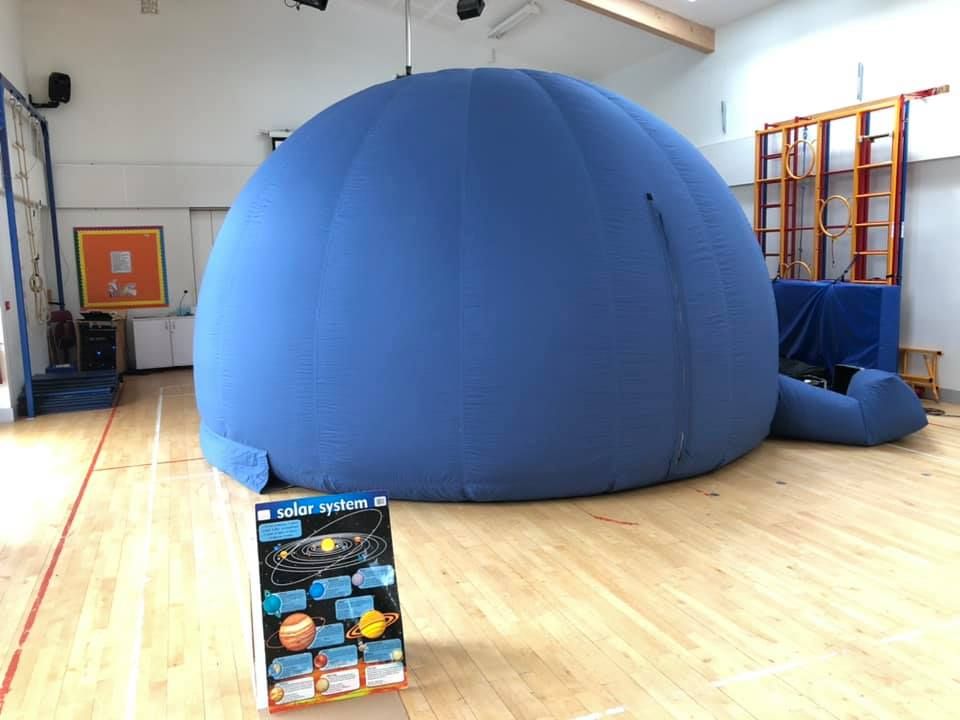
Mobile Planetarium for Schools in the UK
The Science Dome operates eleven mobile digital domes. Nine indoor mobile domes (5m, 6m, and 7m) from Bournemouth, Wimborne (Dorset), Brighton, Trowbridge, London, Leeds, and Newark in Lincoln. We cover the whole of the UK and EIRE on request. In addition, we also have two special outside domes for large events and fairs.Dome Dimensions
Our indoor domes are different sizes and designs to fit all school and village halls. Not all domes are available at all our locations across the UK but there is always a good choice of sizes available. The domes are measured in diameters and the 7 metre dome is only available to travel from our base in Bournemouth or in London. We do not charge extra for bigger domes.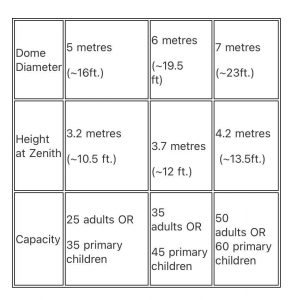
How it works
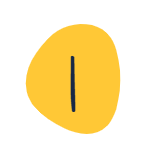
Contact us
Let’s have a chat! We will get a general sense of what you’re looking for, and then make some suggestions as how we can help with the best approach for your school at this moment in time.

Booking
We will give you a quote and book you in if everything is OK with you.
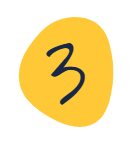
Fill in a risk assessment
We will send you a risk assessment prior our visit for you to complete.

Support
If you have any further questions prior our visit or need any type of assistance please don’t hesitate to contact us.
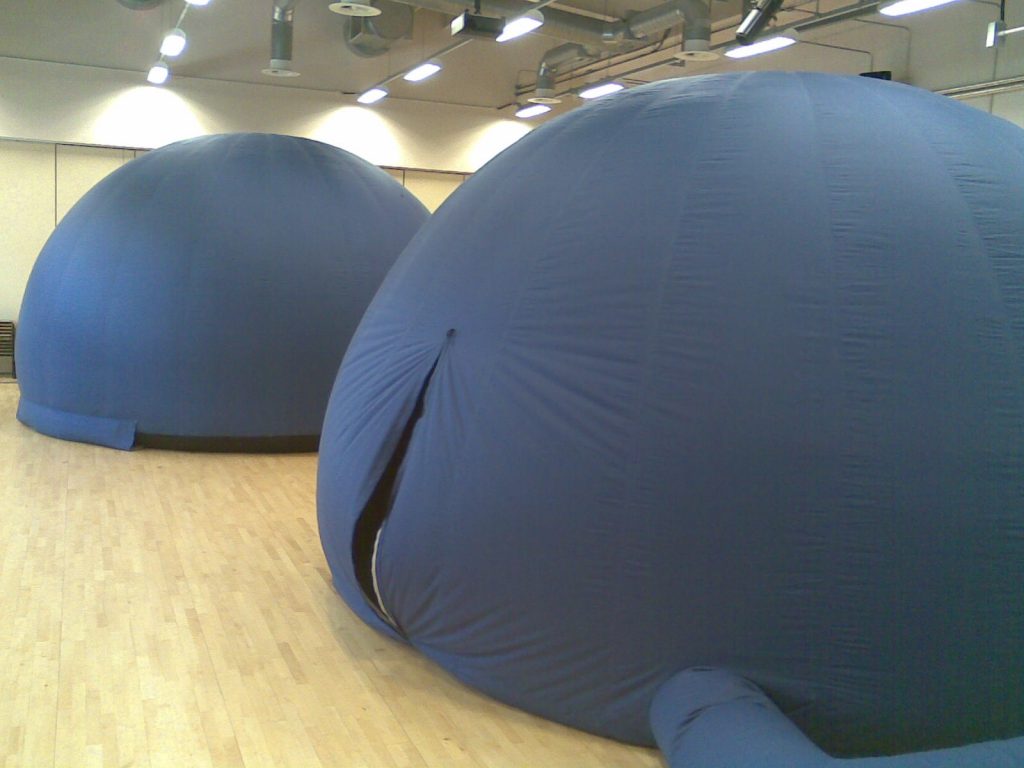
Rates
Full day visit costs £580 (excluding VAT) with a typical day including up to five class shows.
Half day costs for three shows is £480.
Local BCP Council price discount: £530 (full day) and £430 (half day).
We may charge extra for a sixth show during the day. If your school is located near one of our dome bases, then we may be able to come for a half day. Please apply for half day rates if the case.
Please be aware that we charge a travel and hotel supplement if we are required to travel a distance from a base.
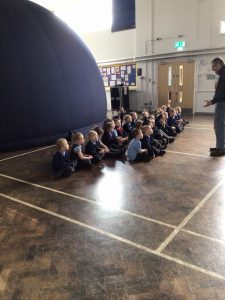
Bookings
Contact us for further information and bookings on 020 35766463, send us an email to info@sciencedome.co.uk, or alternatively click the bottom down below and fill in the form. We will get in touch with you soon after we receive your request.
Teachers Feedback
We write to schools and colleges after the Science Dome visits with a feedback form for comments to improve our service. We get 99% excellent rating! Down below, some of the thank you cards that some children have given us as well. A very sweet touch to our hearts, something that keeps us going and make us fall in love with our job more and more every day.
Thank You Cards
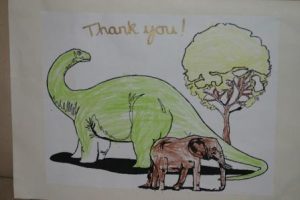
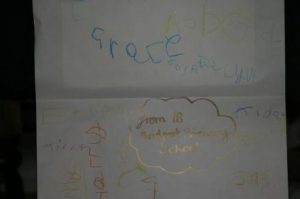
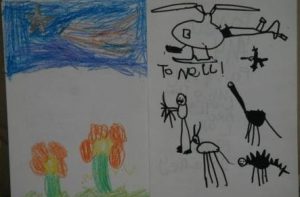

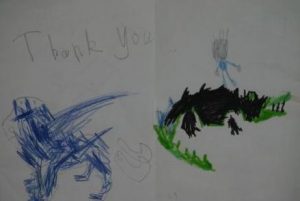
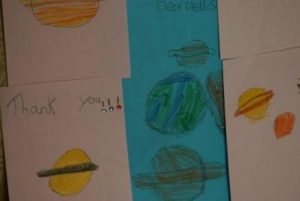
Hundreds of customers all around the UK enjoy our services


General Questions
Have some questions about our company? Find the answers below.
What is a mobile planetarium?
Why choose a portable planetarium?
Why choose Science Dome UK?
- Wide range of topics and shows for all ages.
- We are not limited to Space topics but bring to you an extensive science related programme; covering a wide range of curriculum based topics that will help students to maximise the learning through educative immersive experiences which they will never forget. We make learning stick.
- Based on LIPS (Live, Interactive Planetarium Shows) methodology.
- We focus on quality and learning impact.
- Over 15 years of experience backing us up working for numerous schools, youth clubs, scout groups, big festivals and local events providing them a wide range of services catered to their needs.
- Real fossils collection for our workshops
- We use real scientific data and a simulated universe based on science data. Our projectors can capture real Earth data as well as space data.
- Our projectors can show the different layers of Mars in a 360 degree view using real scientific data providing a deep study of the planet.
- We go beyond simulators to offer an experience that feels real and a learning that sticks.
How far can you travel?
What's the dome size?
The Science Dome operates eleven mobile digital domes. The dimensions of these domes go from 5-8 meters diameter and 3-5 meters height. Being able to provide different sizes and designs to fit all school and village halls.
For the “wow” factor of a large immersive display environment to entertain large numbers of viewers at a show (or other such venue) our immersive 8m diameter domes would be the ideal match. Being 5.2 metres high, this dome offers a large feature in any show.
How many people can fit in the dome?
Our domes provide different sizes and designs to cater to your needs. Their capacity rank from 25-50 adults till 35-60 primary children in a session.
Get in touch, we will give you a precise feedback according to the type of audience or students’ age to help with the organisation.
Teachers Resources
The Science Dome is not responsible for the content of external internet sites. We however do recommend a panel of websites to view (in order below):
A good public interest website at www.scienceprojectideas.co.uk focused on great ideas and advice for science projects.
Some key websites based on SPACE suitable for children are:
http://www.bbc.co.uk/science/space/
http://www.esa.int/esaCP/index.html
Below we have included references to useful websites for astronomy background information and activities, followed by a recommended reading list.
Basic astronomy/general interest:
http://antwrp.gsfc.nasa.gov/apod/astropix.html
http://www.lowell.edu/Public/LEARN
Planets:
http://pds.jpl.nasa.gov/planets/welcome.htm
Moon (Luna):
http://www.nineplanets.org/luna.html
http://www.windows.ucar.edu/tour/link=/earth/moons_and_rings.html
http://hea-www.harvard.edu/ECT/the_book/Chap6/Chapter6.html
Hubble Space Telescope:
http://stipo.larc.nasa.gov/browse/hubble.html
Cosmology:
http://www.astro.ucla.edu/~wright/cosmology_faq.html
http://map.gsfc.nasa.gov/m_uni.html
http://cfa-www.harvard.edu/~jcohn/tcosmo.html
History of astronomy/important astronomers:
http://www.windows.ucar.edu/tour/link=/the_universe/uts/timeline.html
http://www.spacetoday.org/History/History.html
http://www.physics.sfsu.edu/~gmarcy/cswa/history/history.html
Electromagnetic spectrum:
http://imagine.gsfc.nasa.gov/docs/sitemap.html (Click on the “electromagnetic spectrum” link under the “Science” heading.)
http://hyperphysics.phy-astr.gsu.edu/hbase/ems1.html
http://www.geo.mtu.edu/rs/back/spectrum
Debunking astrology:
http://www.astrosociety.org/education/astro/act3/astrology.html
http://www.badastronomy.com/bad/misc/zodiac.html
Astronomy Activities:
http://www.exploratorium.edu/observatory/index.html
http://www.exploratorium.edu/science_explorer
http://www.astrosociety.org/education/activities/activities.html
http://hea-www.harvard.edu/ECT/the_book/
http://cse.ssl.berkeley.edu/AtHomeAstronomy
http://amazing-space.stsci.edu
Constellations and astronomy of different cultures:
Chinese
http://ecuip.lib.uchicago.edu/diglib/science/cultural_astronomy/cultures_china-4.html
http://www.lcsd.gov.hk/CE/Museum/Space/Research/StarName/e_research_chinengstarzone_b.htm
http://en.wikipedia.org/wiki/Chinese_constellation
http://en.wikipedia.org/wiki/Timeline_of_Chinese_astronomy
http://physics.gac.edu/~chuck/astro/archeo.html
http://www.ianridpath.com/startales/startales2a.htm
Ancient Egyptian
http://ecuip.lib.uchicago.edu/diglib/science/cultural_astronomy/cultures_egypt-1.html
http://www.ancientegypt.co.uk/gods/home.html
http://www.egyptologyonline.com/astronomy.htm
http://www.hallofmaat.com/modules.php?name=Articles&file=article&sid=24
http://www.personal.psu.edu/users/d/r/drn116/egypt.html
http://stardate.org/egypt/resources.html
Recommended Reading:
The Complete Idiot’s Guide to Astronomy, Christopher G. De Pree. A thorough but gentle introduction to astronomy.
The Stars: A New Way to See Them, H. A. Rey. A different way to see the stars, from the creator of that mischievous monkey Curious George.
Deep Sky Companions: The Messier Objects, Stephen James O’Meara. Designed to be used with a telescope. Provides photographs of all Messier objects, as well as information on where to look for them.
Interested in our services?
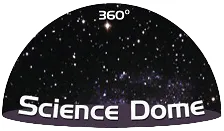
Menu
Get In Touch
020 35766463
Stay Connected
Subscribe to our newsletter and find out more:
Copyright © All Rights Reserved.
